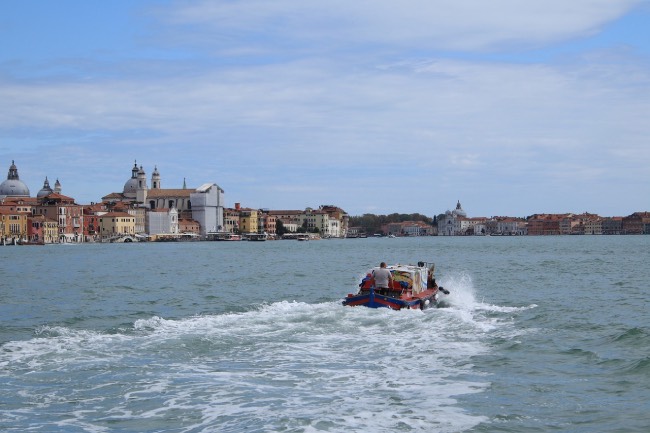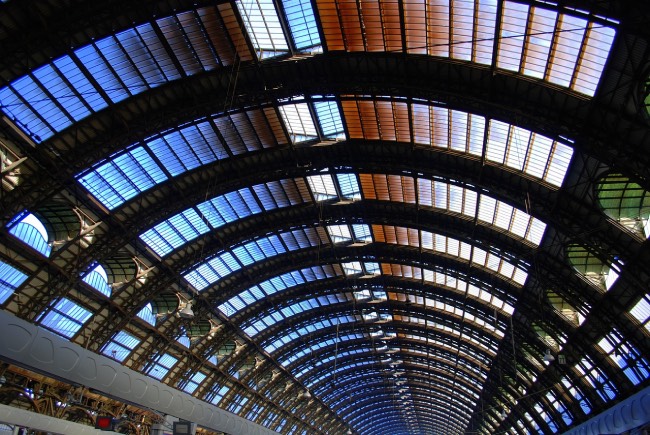Transportation in Italy as a solo traveller is the heart of the matter of this article. Given the situation, looking for transportation that is feasible, comfortable, and safe becomes our primary concern as solo travellers.
In my experience as a solo traveller, I have been informed by people that it is always safe to use public transport and that they extremely charge less compared to other ways of transport. Is it true? Should public transport be the crowning glory of transportation for solo travel in Italy?
I don’t take opinions of void existence. I needed a detailed explanation and, that is when I got to know about the black and white areas of transportation visitors face on their solo travel in Italy.
And I am going to share that knowledge with you. So that when you travel solo to Italy, you get accustomed to their public transports.
Public Transport for solo travel in Italy
Here are the public transports waiting to delight solo travellers with their efficient assistance in Italy. The public transports best preferred for solo travellers on their travel to Italy are buses, heavy train, light train, metro train, ferry, and aeroplane.
Public Transport vs. Private Transport in Italy
To begin with, on my solo travel in Italy I felt public transport suited me solid than the private transport such as Uber, Taxi and Rental Cars.
To those clouded souls demanding an explanation for turning my back on private transports, I have got you covered. So, don’t worry.
Why public transport?
I will give you the reasons why on your solo travel to Italy, you must prefer public transport over private transport.
1. First and foremost, solo travellers have very little interest in strengthening up their budget. That is why public transports in Italy are suitable for them as public transports are priced reasonably.
2. Second, in public transport you don’t have to pay parking prices and toll prices. The government takes care of these charges while on private transport, you won’t have control over the cost spent on the road.
3. In public transport the burden of being responsible is lesser. I mean it, ladies. If you get robbed, or something happened to the rented car, your life is at stake in the hands of the Italians. But, in public transports, even if you get robbed, they quickly take steps to catch the thief instead of pinning the blame on you.
4. Well! Public transports cover extensive areas, for example, secluded villages, local centres, and mountain areas.
5. Last but not least, one of the overlooked benefits of public transport is their consumption of less fuel energy. Yes, compared to the fuel spent for one person on private transportation, public transports use the same amount of fuel or lesser that amounts to all the passengers inside the vehicle.
Private transport for solo travellers
Of course, private transport operates on your command. You can control the pace. But just think about the things you have to do in order to experience it. For instance, hiring taxis in Italy on your solo travel is not safe. You have to check for their colour, board, number plate, license.
Further, to ensure moderate cost, you must always keep an eye on the meter box. So, public transport is the best mode of transportation if you solo travel to Italy.
Trains in Italy

Trenitalia! Does it ring a bell?
The railway system provider of Italy is called Trenitalia. Railways are always the best mode of public transport to cover a long distance at a shorter time.
Italian train can be divided into two: High speed and Low-speed trains. And don’t think low-speed trains are dead slow. It’s just that high-speed trains are so fast, and low-speed trains move like any other normal train.
That being said, high-speed trains connect major cities like Florence, Venice, Naples, Rome while low-speed trains connect other minor areas.
Italian rails go rapid as a rabbit, and their fare is cheaper. However, as a traveller, you can double save your money from special passes.
Travel Passes in Italy
The Italian passes are a damsel in distress to the travellers. They are specially enabled for the benefit of travellers in Italy.
As you walk into the ticket counter to get passes, make sure you know the merits of the passes. There are two passes available. One is for people who are selectively travelling to Italy. Their target could be covering major cities or popular attractions in Italy. In that case, your drop list can be counted. Hence, go for Premium Italy passes.
In the next category, come the people whose plan is to visit all the places in Italy. I know it is not possible to visit all the places in Italy. Let us say their list is uncountable. They have plans on travelling to less popular destinations like villages and towns. If you are one of those people, ask for a Eurail Italy pass.
Difference between Premium Italy pass and Eurail Italy pass?
Premium Italy pass helps in eliminating the city-to-city tickets. Giving you access to shifting trains with no tickets every time you jump into a new train. The pass can be shown wherever you go.
The pitfall of Premium Italy pass is they have a valid duration as in your pass expires within 4 or 8 days. Then, you will be obliged to get another individual pass.
On the contrary, if you opt for Eurail Italy pass, you can visit several places, shift trains with no set duration and time limit. The pass has no validity.
Points to remember on your travel in trains in Italy
Before stepping your foot at the railway station, remember even if you hold a pass, you still need to book your tickets prior to your journey.
- Go to the self-service machine.
- Confirm your booking and get your ticket.
- If the reservation was made online. Validation of tickets at the railway station is not necessary.
- The e-ticket is enough. So, you can directly hop into the train.
Buses in Italy

Let’s talk about the bus—the ordinary public transportation with extraordinary pull for travellers in Italy.
Buses in Italy are cheaper than trains. On entering a bus stand, you will find bus routes to every part of Italy.
Nevertheless, frequent buses are available to routes connecting urban areas. Likewise, bus routes linking suburban to urban areas are also easily spotted. But, when you plan on taking the route connecting one suburban and another suburban, the buses are quite fewer.
Am I confusing?
Let me break it with an example for our understanding. Take the urban areas-Naples and Florence as examples. San Lorenzo and Santa Croce are suburban areas of Florence.
In the same way, Barra and Ponticelli are suburbs of Naples. Buses between Venice and Naples are available. Likewise, there are plenty of buses roaming between the suburban stop of an urban place. Like Barra, Ponticelli, and Venice.
But there are no bus routes connecting Ponticelli and Santa Lorenzo. I hope it’s clear now.
In this scenario, what you can do is first reach the nearby urban city. Then from there move to the suburban area. It is as simple as that.
The speciality of Italian Buses
When you solo travel to other countries. How much ever we plan and look through all information, it takes real-time to actually implement it.
To give an example from my experience, every time I begin my travel, I plan not to hire a taxi to reach the hotel. I will try so hard to reach the tourist spots using inexpensive modes of transport on my first day.
But, most of the time, I end up taking a taxi from the airport because bus stops seem far away to reach.
Here in Italy, all the airports have bus line facilities. Bus stops are located a few steps away from the airport terminus. So, it is easy to locate them, more than easy to reach them with luggage.
Bus shuttling facility from the airport is the speciality of Italian buses.
Booking bus tickets in Italy
As mentioned already, you can travel in Italian buses only if you have tickets. There are three ways to get bus tickets.
1. Online
Online booking of bus tickets is opened only for urban destinations like Naples, Venice, Rome, Florence.
2. Offline
Offline booking is available in all cases.
- Reach the bus stop earlier.
- Go to the office.
- Tell them the destination
- Pay the money and collect your ticket
3. On bus
Yeah! You can collect your ticket right on the bus. However, this is possible only if the bus is running short of passengers. In that case, you can enter the bus. Sit in an empty place. When the collector comes, pay the fare and get your ticket.
Travelling without a ticket is a huge crime in Italy. You will be severely punished for it. Although, it won’t happen as you will be allowed inside the vehicle only after checking.
Italian buses are not national networks—disclaimer!
I know I am informing you late. Sorry. It skipped my mind.
So, the disclaimer news I want to tell you is that Italian buses are not owned by the government. It is all private-oriented.
Having said that, it is a disclaimer because I am informing out of the blue. But it is not a threatening issue. It has become the unofficial public transport for the people of Italy, for the Italian buses are the only available cheap mode of transport. So, the service is as good as an official one.
Orari Autobus, SENA Autolinee, SAIS Autolinee, and SAIS Trasporti are notable websites to check for bus schedules and book your tickets.
Ferries in Italy

We have discussed the two major and primary modes of transportation in Italy. It’s time to look at ferries and metro services in Italy and end our talk for the day.
Ferries!
Sounds flourishing, isn’t it?
I love trips on ferries. Two things why I like them. One—whenever they are involved, the arriving destination is AWESOME. Second—ferries always take me to my dream destinations.
My ferry experience in Italy was in Sicily. When I arrived at the port, I was surprised to see the plain unattractive yet neat boats in differing sizes.
I was curious enough to ask the sailor why not take us on that ferry. That is when I learned three beautiful Italian Phrases. They are Navi, Traghetti and Aliscafi.
Navi is a ferry that can accommodate a large number of people, while Traghetti is a smaller ferry limiting passengers according to its capacity.
Aliscafi, also called hydrofoils, are super large ferry that transports vehicles and large cargo from land to islands.
Ferry tickets are reachable at the ferry point. Travellers have the option to rent a ferry—but why would we, as solo travellers, rent a whole ferry?
Thinking of it now—renting a ferry all for myself, looking at the painted sky and the painted sea! It seems like I missed a wonderful time!
Metros in Italy

Metros are one of the rarest public destinations in Italy. Yeah, metros are super fast, super comfortable, and super clean, but Italy has very few metro stations.
I can name them if you want. Metro service is maintained only in Milan, Rome, Naples, Turin, Genoa, and Catania.
So, in Italy, even if you wish to use metros, you cannot use them unless you are in the metropolitan cities.
Aeroplane in Italy

Finally, airplanes! I have no say in this mode of transport. We all are aware of the ways of the aeroplane. We land in Italy on an aeroplane and the same way we return.
Keeping aside the international flight services, Italian airlines provide domestic services like from Milan to Rome; Rome to Naples; Naples to Pisa.
However, I prefer train routes inside Italy. Aeroplanes take up the expensive side of my list. Hence, I am not a flight person.
The ticket procedures are the same as that of our international booking.
That’s the end, friends. I hope the information will be useful for you while getting around in Italy as a solo female traveller. And, yes! Without any doubt, public transports are the best, desirable, competent choice of transportation that can lighten your journey and budget.








Leave a Reply